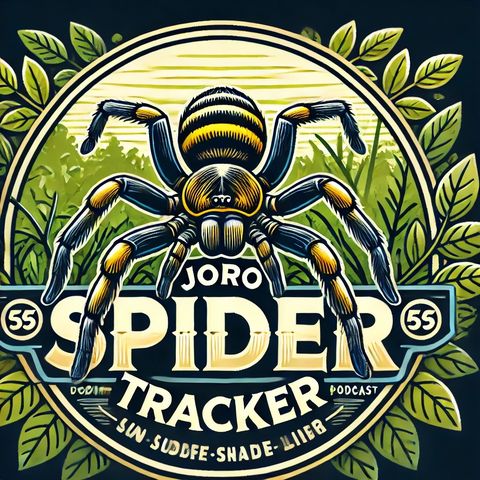Joro Spider's Northward March: Exploring the Ecological Impact of an Invasive Species

Download and listen anywhere
Download your favorite episodes and enjoy them, wherever you are! Sign up or log in now to access offline listening.
Description
The Joro spider, scientifically known as Trichonephila clavata, continues to extend its geographical reach in the United States, now recorded as far north as Boston, Massachusetts. This marks the most...
show moreThe Joro spider belongs to the family of orb-weaver spiders known for creating extensive and intricate webs. Typically, these spiders are identified by their sizable yellow and black bodies, which not only contribute to their daunting appearance but also serve a critical role in their survival and adaptation mechanisms. Despite their size and somewhat fearsome reputation, Joro spiders are not known to be harmful to humans. Their venom is not potent enough to cause significant harm, which categorizes them more as a nuisance rather than a dangerous pest.
The presence of Joro spiders in new locations such as Boston might be attributed to their remarkable ability to adapt to various climates. This adaptability raises concerns about their potential impact on local ecosystems. Invasive species can often pose threats to native species by competing for resources, altering habitats, or introducing diseases. Researchers are actively studying the ecological implications of the Joro spider's presence and spread in the United States to understand the potential impacts on native species and ecosystems.
Public reactions to the sightings of these large spiders can range from fascination to fear. Misconceptions about their danger to humans can lead to exaggerated fears, despite reassurances from experts about their benign nature. Educational efforts could mitigate unwarranted worries by informing the public about the actual risks posed by Joro spiders and the ecological role they play.
Such northward expansion of species like the Joro spider is also a subject of interest in the context of global climate change. As temperatures rise, species that were once confined to specific climatic regions are finding suitable conditions farther from their original habitats. This phenomenon underscores the broader shifts in biodiversity patterns that can be expected as the global climate continues to change.
In conclusion, the sighting of a Joro spider in Boston highlights a significant expansion in the range of this non-native species, invoking interest and concern from the scientific community and the public. Understanding and managing the presence of such invasive species is crucial for maintaining the health and stability of local ecosystems and requires a balanced approach between curiosity and caution.
Information
| Author | QP-4 |
| Organization | William Corbin |
| Website | - |
| Tags |
Copyright 2024 - Spreaker Inc. an iHeartMedia Company

Comments